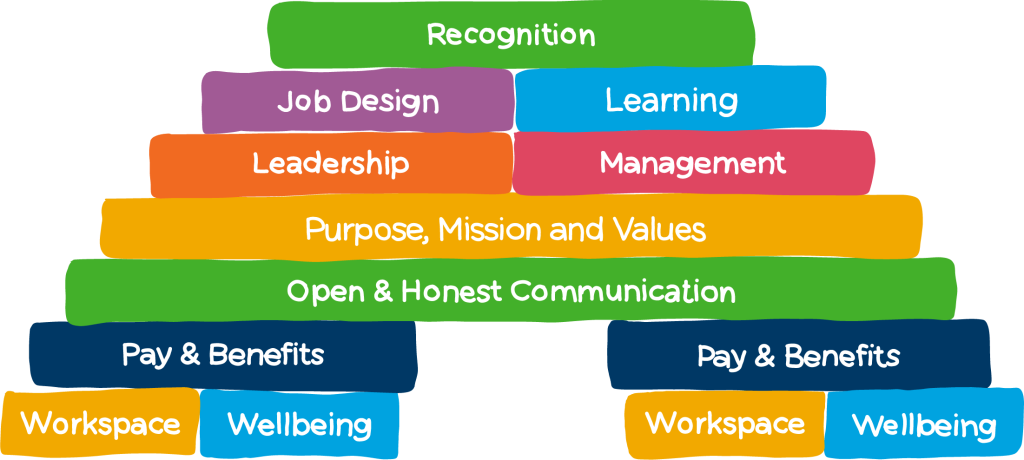In part 1 of our article, we introduced The “Engagement Bridge” concept created by Glenn Elliott and Debra Corey in their book “Build it: The Rebel Playbook for World-Class Employee Engagement”, and covered the core fundamentals of (1) Open & Honest Communication and (2) Purpose, Mission & Values. This second part of the article now covers the remaining three parts of the model and explains how you can bring employee engagement to life:
3. Leadership & Management
Leadership and management need to work hand in hand. Leadership can be viewed as what the company says it will do, while management is what the company actually does.
Well-led and successful companies have high levels of trust in leadership. Typically leaders will:
· Put the mission first
· Live the values every day
· Have and use great judgement
· Be human
· Act with integrity
Leadership can inspire you to a cause, connect you to a strategy and make you deeply want the organisation to succeed. But it’s management that people will connect with each and every day. Bad managers can ruin everything; if you don’t identify and deal with bad managers you will lose the respect of your staff.
Elliott and Corey describe five key ways to align leadership with management throughout the company:
i. Write HR and finance policies for the many, not the few
ii. Align HR practice with mission, purpose and values
iii. Have adult equal relationships with employees
iv. Ignore established HR best practices (if they don’t fit)
v. Love your lawyers (but manage them carefully)
4. Job Design, Learning & Recognition
The best designed jobs have recognition (and visibility) and learning (and development) built into them right from the start. A boring job where you have no meaningful output, no sense of achievement and no-one seeming to notice if you do it or not, is not made better by sticking a recognition programme or a few e-learning modules onto the side of it.
Key characteristics to bear in mind when designing roles and teams are:
i. Freedom to fail
ii. Accountability and visibility
iii. Jobs designed around mission
iv. Focused nimble teams
v. Jobs that are meant to evolve
Fundamentally, to be able to be engaged, someone has to be in a job that has some degree of autonomy and accountability, and produces meaningful results that are seen and recognised. Any job will become disengaging if it does not develop and progress over time.
Pay & Benefits, Workspace & Wellbeing
As Elliott and Corey’s model below shows, pay & benefits, workspace and wellbeing are the underpinning elements of the whole concept of The Engagement Bridge. They are not the same as the connecting elements that run across, as you cannot engage your workforce with these elements alone. However, if they are lacking, your Bridge will be built on unstable ground.

Have a look at our previous articles on wellbeing and think about how physical and virtual workspaces can be enablers or destroyers of employee engagement. Pay, in particular, can be an enormous disengage of your people, especially if they perceive it as dealt with unfairly. Getting this right can be a minefield. Many organisations choose to start with a simple new employee benefits to act as an olive branch to their workforce at the start of their employee engagement journey, but make sure you use this as a starting point and not an end in itself.
So there we have it – The Engagement Bridge. Remember, engagement is never complete and you don’t have to get everything right before you start seeing positive changes. Nothing will ever be perfect, making progress is what’s important!
This article is based on the content of Build it: The Rebel Playbook for World-Class Employee Engagement by Glenn Elliott and Debra Corey. Full credit is given to the authors.
To read more, order the book here.
